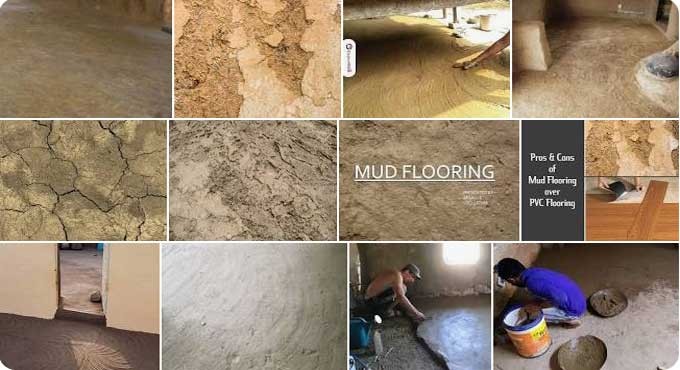In the pursuit of sustainable and eco-friendly living, traditional building materials are experiencing a resurgence, and among them is the humble mud floor. Revered for its natural qualities, cost-effectiveness, and aesthetic charm, mud floors carry a timeless appeal that connects modern dwellers with age-old construction practices. In this article, we explore the characteristics, benefits, and cultural significance of mud floors.
1. The Art of Mud Flooring:
Mud floors, also known as earthen floors, have been used for centuries across various cultures. This traditional building material consists of a mixture of clay, sand, straw, and often other natural fibers. The concoction is spread over a prepared subfloor and left to dry, creating a solid, durable surface.
2. Natural and Sustainable:
Mud floor epitomizes sustainability. The primary ingredients—clay, sand, and straw—are abundant, locally available, and renewable resources. Unlike industrially produced flooring materials, mud floors have a minimal environmental impact, making them an eco-friendly choice for those seeking a sustainable lifestyle.
3. Cost-Effective Construction:
One of the most appealing aspects of mud floors is their cost-effectiveness. The raw materials are inexpensive, and the construction process is simple, reducing overall construction costs. This makes mud floors an attractive option for those on a budget or those looking to build with sustainability in mind.
4. Thermal Mass and Comfort:
Mud floors offer excellent thermal mass properties, meaning they can absorb, store, and release heat slowly. This contributes to a more comfortable indoor environment, as the temperature remains relatively stable. In cold climates, the floor absorbs heat during the day and radiates it back in the evening, while in hot climates, it helps maintain a cooler interior.
5. Breathability and Moisture Regulation:
Mud floors are inherently breathable, allowing moisture to pass through. This characteristic is particularly advantageous in humid climates, as it helps regulate indoor humidity levels. The breathability of mud floors also prevents the growth of mold and mildew, contributing to a healthier living environment.
6. Customization and Aesthetic Appeal:
Mud floor offer a high level of customization in terms of color, texture, and finish. The addition of pigments or natural fibers during the mixing process allows homeowners to achieve a variety of earthy tones and textures, adding a unique and personalized touch to the living space. The natural aesthetic appeal of mud floor complements various architectural styles, from rustic to contemporary.
7. Cultural Significance:
The use of mud floor is deeply rooted in cultural traditions across the globe. In regions with a rich history of earthen construction, such as parts of Africa, the Middle East, and South America, mud floor are a symbol of cultural identity and continuity. Embracing mud floor connects individuals with the traditions of their ancestors and contributes to the preservation of cultural heritage.
8. Low Environmental Impact:
Mud floors have a low embodied energy, meaning they require minimal energy input during production and construction. This stands in stark contrast to the energy-intensive processes involved in manufacturing and transporting industrial flooring materials. Opting for mud floors aligns with a sustainable lifestyle by reducing the overall carbon footprint of the construction project.
9. Maintenance and Reparability:
While mud floors may require periodic maintenance, they are easy to repair. Small cracks or imperfections can be patched with additional mud mixture, ensuring the longevity of the flooring. This ease of repair contributes to the overall durability of mud floors.
Conclusion:
In the quest for sustainable and culturally resonant living spaces, mud floors offer a compelling alternative to conventional flooring materials. From their natural and renewable composition to their thermal properties and aesthetic versatility, mud floors provide a harmonious blend of tradition and innovation. Embracing mud floors not only aligns with eco-conscious living but also fosters a connection to the timeless practices of building with the earth beneath our feet.

